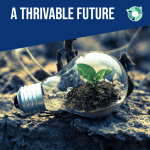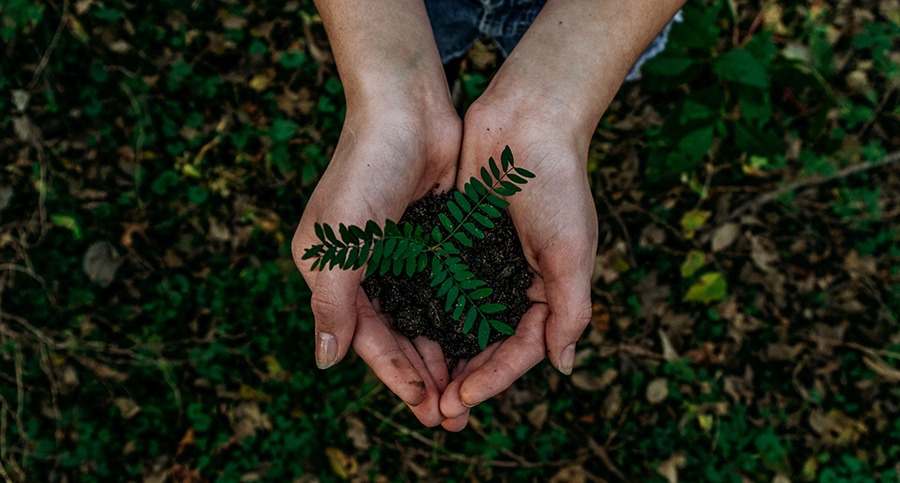Introduction to Smart Farming
According to recent estimates, the world population will hit 9.6 billion by 2050, which will require a 70% increase in food production. This presents a major challenge for farmers who already struggle with limited resources, climate change, and a growing demand for sustainable farming practices (Elkady, 2023). The agricultural sector must adopt the Internet of Things (IoT), which involves using sensors, connected equipment, software and data science to continuously track and regulate the farming processes. This adoption is essential to overcoming environmental challenges and ensuring sufficient food for the growing population (TEKSUN, n.d). Smart farming is a high-tech, efficient method of cultivation and food production that is environmentally friendly. It is a method of integrating smart electronics and cutting-edge technology into agriculture. Smart farming is heavily reliant on the IoT, eliminating the necessity for manual labor by farmers and growers and enhancing productivity across various dimensions (TEKSUN, n.d).
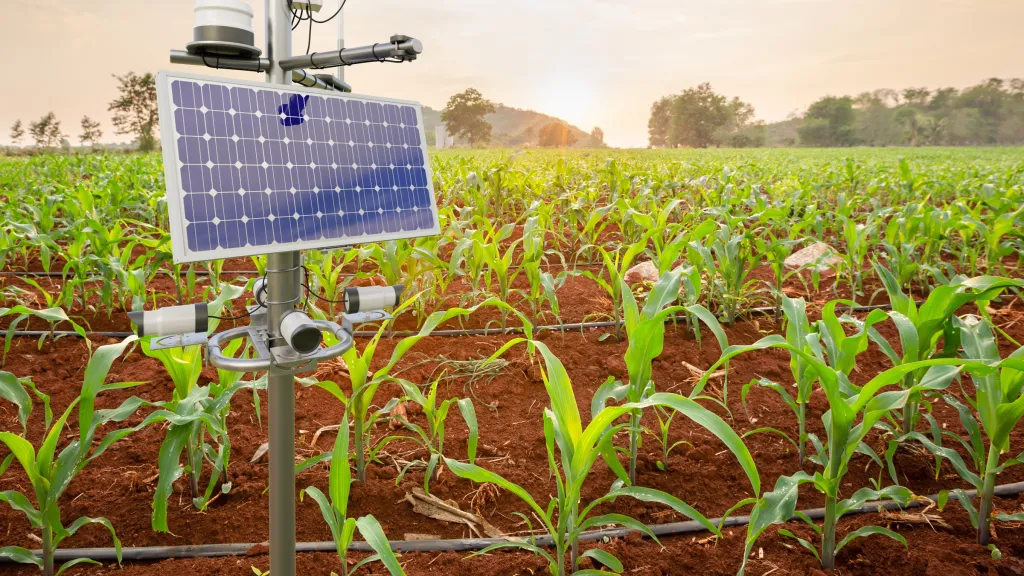
Source: Brenes & Marin-Raventos, 2024
Definition
Smart Farming
Smart farming involves the application of modern Information and Communication Technologies (ICT) into agriculture, which benefits large conventional farms, small family farming, and organic farms. It also minimises the ecological footprint of farming. Smart farm is revolutionising the way farming is done. IoT solutions allow farmers to save time, reduce waste, and increase productivity by connecting their farms and providing them with remote control and monitoring abilities.
Smart farming is a modern farming approach that uses technology to boost productivity, streamline labor, cut costs, increase profits, and reduce environmental impact.

Source: Baidas, 2023
Sustainable Agricultural Storage
In today’s agricultural industry, efficient storage and inventory management are essential for profitability (Ain, 2025). Sustainable storage isn’t just a fad—it’s a pressing necessity. Similar to adopting a plant-based diet to combat environmental degradation and choosing between a gas-guzzler and an electric car. No longer are storage solutions solely about brick and mortar. Modern farm and agricultural buildings have evolved to incorporate sustainable practices, ensuring functionality and minimal environmental impact (Rooks, 2024). Sustainable storage practices aim to minimise the negative environmental impacts associated with conventional storage, including resource depletion, waste generation, and carbon emissions. The use of renewable energy sources, for instance, can significantly reduce the carbon footprint of storage facilities. Furthermore, the selection of materials with low embodied energy and the implementation of effective waste management strategies can minimise the environmental burden of storage (Sustainability Directory, 2025).
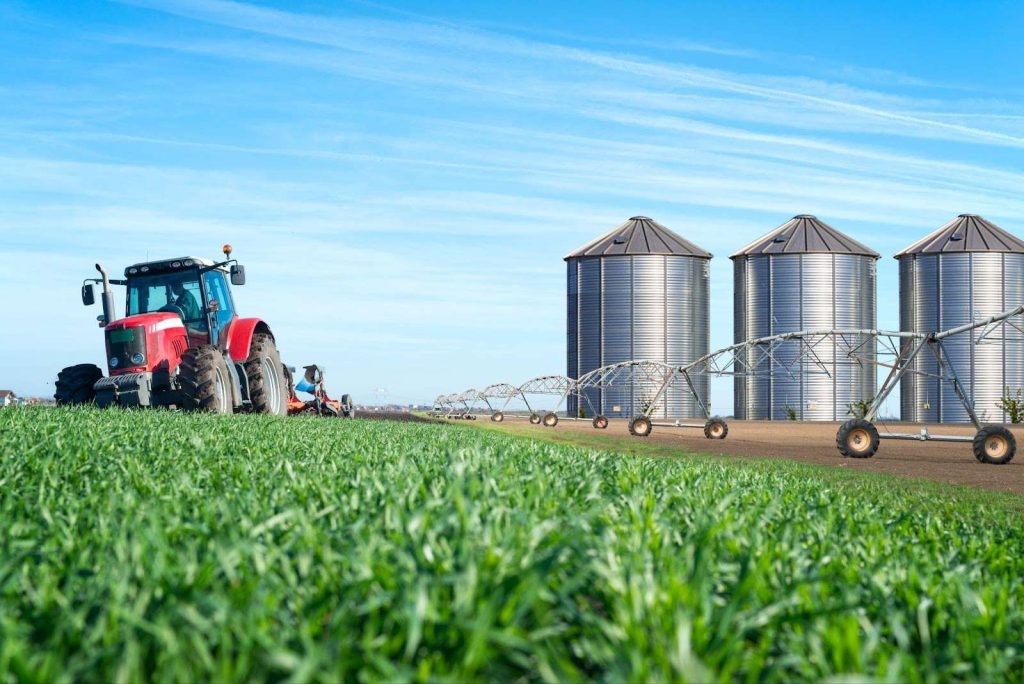
Source: Simos, 2024
The modern farm’s most valuable allies for storage are:
Grain Drums
Grain drums are strong containers made from steel or recycled plastic. They protect grains from moisture, pests, and bad weather. These drums are eco-friendly because they use recycled materials, helping farmers store grains safely while caring for the environment. Their durability and versatility make them a great choice for keeping grains fresher for longer (Rooks, 2024).
Root Cellars
Root cellars are underground storage spaces that use the earth’s natural insulation to keep food fresh. They maintain a steady temperature, making them perfect for storing root vegetables, fruits, and fermented products. This traditional, energy-free method is an eco-friendly way to preserve food, proving that nature’s solutions are often the best (Rooks, 2024 & Kaspari, 2020).
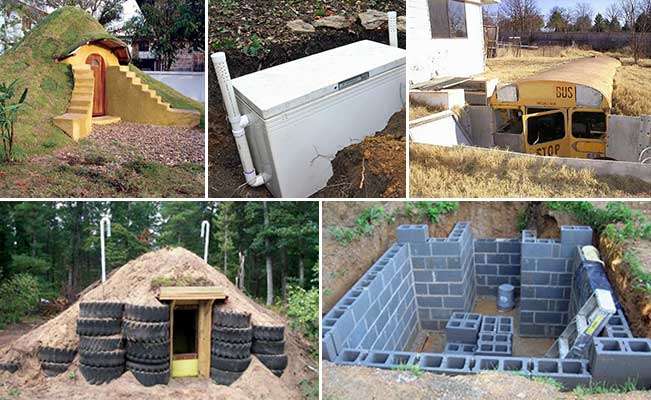
Source: woohome, n.d
Hay Barns
The optimal storage for hay is under cover with protection from the weather on the side of the most common wind direction. Placing a tarp under the haystack can help prevent moisture spoilage on the bottom bales. Square bales are the most efficient to store under cover and to transport, due to the weight density. Hay storage planning is essential to ensure year-round availability, as hay is typically harvested annually, often during grain harvest.
The required storage volume depends on feeding needs, purchasing timing, bale type, and available space. Covered storage preserves hay quality for over 12 months, while uncovered outdoor storage leads to nutrient loss within six months. Storage facilities should be designed based on bale size, with adequate clearance for handling equipment, typically requiring a minimum roof height of 5.4 meters. Compressed hay bales offer a space-saving and efficient storage solution while simplifying transportation. Using biodegradable wrapping instead of plastic makes hay an eco-friendly choice. This innovation supports sustainable farming by reducing waste and promoting easier, greener hay transport (Rooks, 2024).

Source: Davis, 2016
Sustainable Irrigation
Water for agriculture is in short supply and this is worsening in numerous regions globally. Overdraft of groundwater supplies jeopardises future irrigation capacity, while overdraft of surface waters disturbs important riparian zones, which are the lands next to creeks, rivers, and wetlands. In the context of water resources, “overdraft” means extracting groundwater faster than it can be replenished by natural processes like rainfall and runoff. Seemingly, water quality problems such as salinisation, nutrient overload, and pesticide pollution are very common. Agricultural management techniques will need to be significantly improved, where the sustainable use of irrigation water is a priority for agriculture, especially in arid areas. Efficiently utilising reduced-volume irrigation methods, choosing and developing more salt and drought-tolerant crop species, and managing soils and crops to minimise water loss are all strategies to use water more effectively in sustainable agroecosystems.
Low Volume Irrigation.
Source: IFAS,2012
From the farmer’s viewpoint, sustainable irrigation means having a steady, uninterrupted water source at a price that doesn’t exceed the marginal revenue they aim to make. From the environmental viewpoint, it means only using volumes of water that can be naturally replaced within a limited timeframe that doesn’t run the risk of endangering future requirements (Ware, 2023).
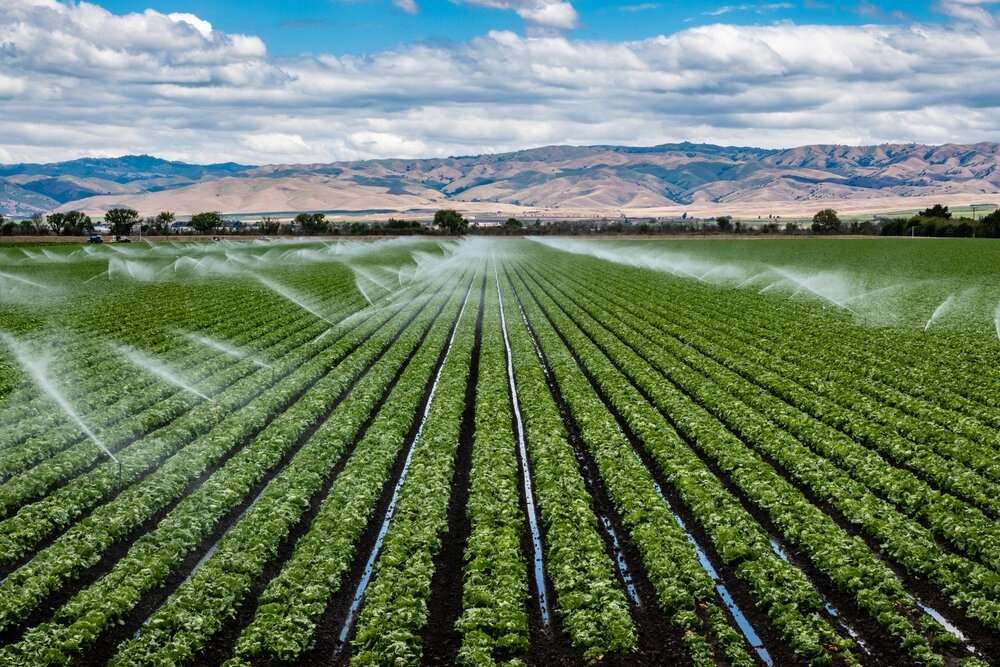
Source: Ware, 2023
Drip irrigation is the most water-efficient irrigation system, capable of dramatically reducing a farm’s water use while increasing crop yields and quality (AGRIVI, n.d). The two main types of more sustainable irrigation systems in use today are drip and sprinkler irrigation. The decision of which of the two types to use is dependent on various factors, including:
- The type of crop.
- The size of the fields.
- The cost of installation and ongoing maintenance.
- How eco-friendly you want to be (Ware, 2023).
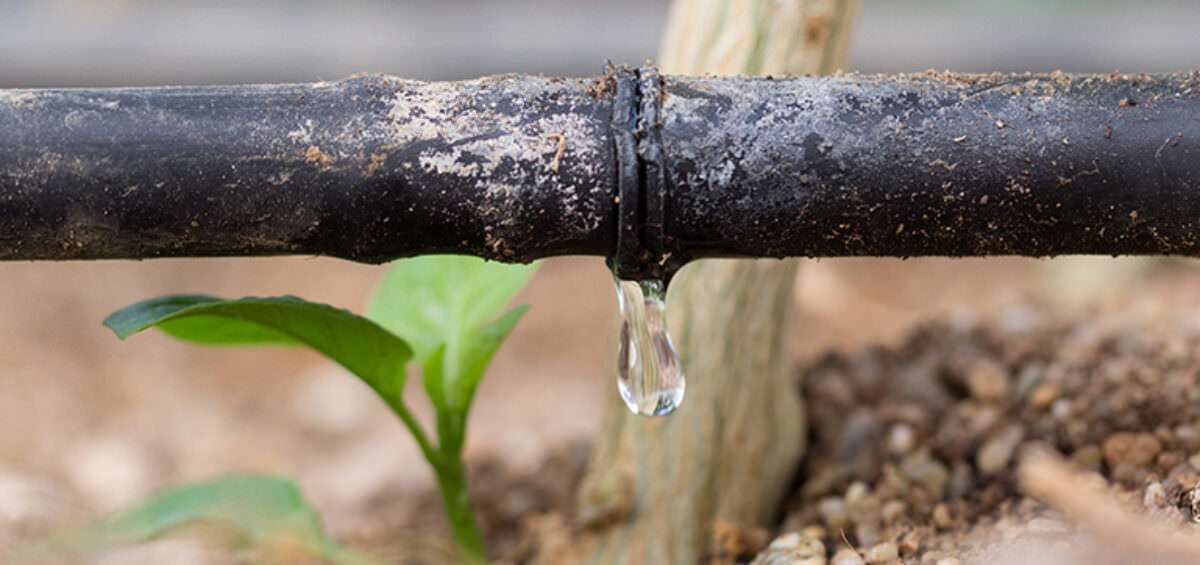
Source: AGRIVI, n.d
Sustainable Greenhouse Systems
Greenhouse gardening is an efficient way to grow food on a relatively small piece of property without compromising soil quality. Greenhouses help keep surrounding areas undisturbed, preserving the ecosystems and wildlife present (Green Business Benchmark, 2021). Sustainable greenhouse systems use eco-friendly materials, energy-efficient glazing, and other techniques to reduce energy use and greenhouse gas emissions (Agritech tomorrow, 2024). Sustainable greenhouse horticulture can be achieved by employing different cultivation techniques, adequate equipment management, and innovative materials aimed to reduce agro-chemicals, energy use, water consumption, and waste generation (Vox et al., 2010). Designing a sustainable greenhouse involves:
- Selecting the right site.
- Designing the right structure.
- Building with sustainable materials.
- Implementing an eco-friendly watering system.
- Following the 3 R’s: Reduce, Reuse, and Recycle.
- Optimising energy usage (Green Business Benchmark, 2021).
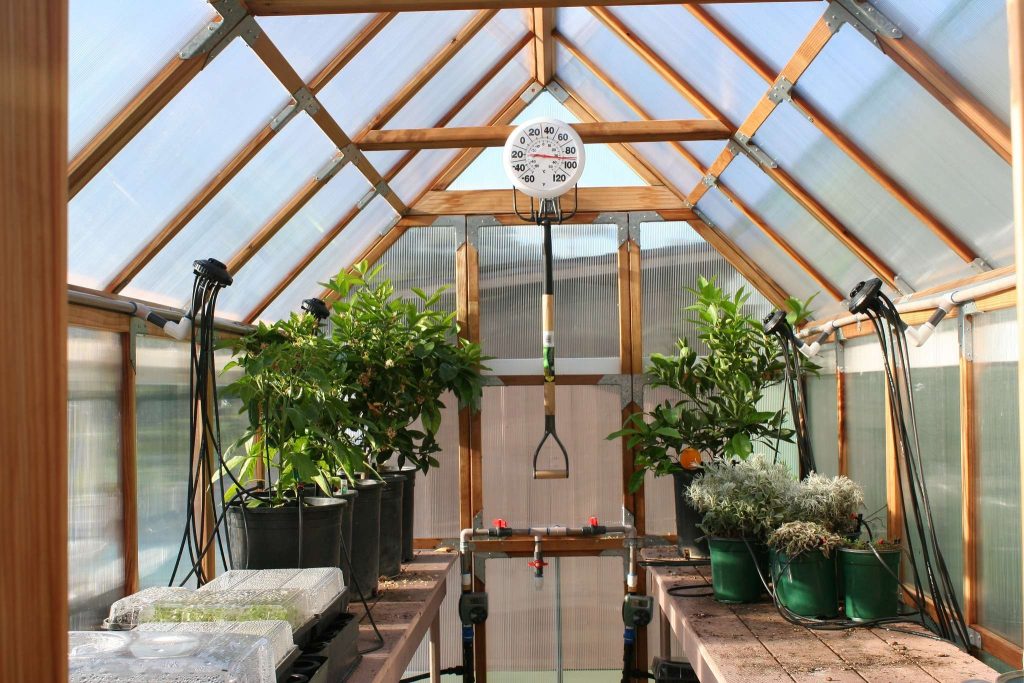
Source: Hendricks,2015
Smart Farming Technologies
Smart farming technologies have the potential to revolutionise agriculture by enhancing resource efficiency, productivity, and sustainability (Brenes & Marin-Raventos, 2024). The Internet of Things (IoT), Big Data, Artificial Intelligence (AI), geo-positioning systems, and drones are some of the technologies applied to agriculture, in combination with ICT. Following a cycle of Observation – Diagnostics – Decision Making – Action, these modern technologies aim to increase the quantity and quality of production as well as the optimisation in terms of the required human labour. Smart farming uses technology to improve agricultural practices, including crop monitoring, livestock management, and water management (Gill, 2024).

Source: Smart Farming
Advanced technologies powering today’s smart farming include:
Information and Communications Technology (ICT):
Facilitates data capture, storage, processing, security, and transfer, enabling efficient organisation and management of agricultural data.
Internet of Things (IoT):
Utilises sensor-equipped devices to monitor crops, livestock, and equipment, while UAVs (Unmanned Aerial Vehicles), commonly referred to as drones, are revolutionising smart farming by enabling tasks like crop health monitoring, precision spraying, field mapping, and irrigation management, leading to more efficient and sustainable agriculture practices.
Artificial Intelligence (AI) & Machine Learning (ML):
Analyses big data from IoT, providing predictive analytics, weather forecasting, and optimised decision-making for crop production, land use, and supply chains.
Automation & Robotics:
Boosts efficiency with autonomous tractors, robotic seeding, harvesting, and UAV-assisted precision application of fertilisers and pesticides, reducing environmental impact.
Case Study
Sundrop Farms operates under a unique concept where there is only one season—the growing season. By leveraging advanced agricultural technology, the farm maintains optimal conditions for plant growth, ensuring the production of high-quality fruits and vegetables throughout the year. Located in Port Augusta, South Australia, Sundrop Farms has established a world-class 20-hectare greenhouse that is now fully operational. The foundation for this large-scale facility was laid in 2009 with the construction of a 0.2-hectare pilot site. This initial project played a crucial role in refining and developing the innovative technology that underpins Sundrop Farms’ sustainable farming approach, which now extends across more than 200,000 square meters.
Source: Sundrop Farms
Sundrop Farms is a pioneering agricultural enterprise that integrates sustainable practices in storage, irrigation, and greenhouse management. Operating in arid conditions, the company developed innovative methods to grow crops using minimal finite resources.

Source: Sundrop Farms
Tome City in Miyagi, a major rice-growing region in Japan, was facing issues as a result of an ageing population and a lack of labour force. In an effort to curb these challenges, farmers have introduced drones to maintain production. As a result, the farmers are reportedly using significantly less water and need less labour, while optimising their spraying times.
Source: Smart Farming in Japan
Conclusion and Call to Action (CTA)
As the global population grows, so do the challenges owing to limited agricultural land and resources. To address this, the agricultural industry is turning to internet connectivity solutions like IoT to reduce reliance on manual labor. IoT in smart farming helps optimise productivity by using sensors to monitor crop fields for light, humidity, temperature, soil moisture, and crop health. This allows farmers to remotely manage irrigation and other tasks, improving efficiency and minimising waste.
In summary, smart farming, powered by IoT integration, leads the charge in agricultural innovation, providing precision, efficiency, and sustainability. The progression to smart cloud farming enhances these advantages, utilising advanced technologies to optimise resource use, improve data analytics, and bolster resilience amid evolving agricultural environments. This comprehensive approach tackles current challenges and charts a course for a connected, data-driven future, fostering more efficient, productive, and eco-conscious agriculture. Smart farming, coupled with smart cloud solutions, signifies a transformative path toward a technologically advanced and resilient agricultural sector (Gran, 2025).
Achieving THRIVE project goals & The UN’s SDGs
Smart farming, through sustainable agricultural storage, irrigation, and greenhouse systems, aligns with THRIVE’s 12 Foundational Focus Factors (FFFs), particularly Values-Based Innovation, Finite Resources, and Science-Based Targets.
Values-Based Innovation:
Related to strategies are the vehicles by which the quest for sustainability, and by extension, thrivability are enabled. The requirement for these shared values is essential on multiple levels.
Finite Resources:
Resources that we consume faster than they can be replaced are called non-renewables. As non-renewable resources are finite resources in nature, the sole option is to minimise depletion through reduction, reuse, and recycling)
Science-Based Targets:
Science-based targets guide entities in contributing to the common goal of reducing greenhouse gas emissions. They also provide a clear framework and methodologies.
Smart farming enhances productivity, sustainability, and efficiency while reducing costs and environmental impact through advanced technology. These technologies play a vital role in achieving all Sustainable Development Goals (SDGs) by promoting resource efficiency and resilience in agriculture. However, three specific SDG targets emphasise the importance of smart farming, SDG2: Zero Hunger, SDG6: Clean Water and Sanitation, SDG7: Affordable and Clean Energy, and SDG9: Industry, Innovation, and Infrastructure.
SDG2: Zero Hunger
Smart farming supports sustainable food production systems with advanced greenhouse technologies and improves food security by enhancing crop yields and reducing post-harvest losses through better storage and irrigation.
SDG6: Clean Water and Sanitation
Smart farming with efficient irrigation reduces water waste, promoting responsible water use.
SDG7: Affordable and Clean Energy
Smart farming uses solar-powered irrigation and energy-efficient greenhouse systems to reduce reliance on fossil fuels.
SDG9: Industry, Innovation, and Infrastructure
Smart farming contributes to SDG9 by promoting technological advancements, modern infrastructure, and sustainable industrialisation in agriculture.
A Thrivable Framework
THRIVE Project exists to create a future in which humans will not only survive but thrive. Its mission centres on ensuring the long-term food security and thrivability of all species on Earth. Through the THRIVE Framework, the project analyses global challenges, evaluates potential solutions, and applies predictive analytics to drive environmental and social sustainability transformations. THRIVE advocates for a balanced approach, demonstrating that ecological, environmental, and social needs can be met simultaneously without compromise. THRIVE advocates combining smart and sustainable approaches to create thrivable and sustainable systems that are environmentally friendly, economically viable, and resilient to future challenges. The future of farming is technologically oriented. Future farmers will work smartly, employing sustainable methods to combat hunger, climate change, resource scarcity, and pollution.
To learn more about how THRIVE Project is researching, educating, and advocating for political and economic equality and trying to create a future beyond sustainability, visit our website. You can follow our informative, diverse blog and podcast series and learn more about our regular live webinars. Sign up for our newsletter to receive regular updates.





